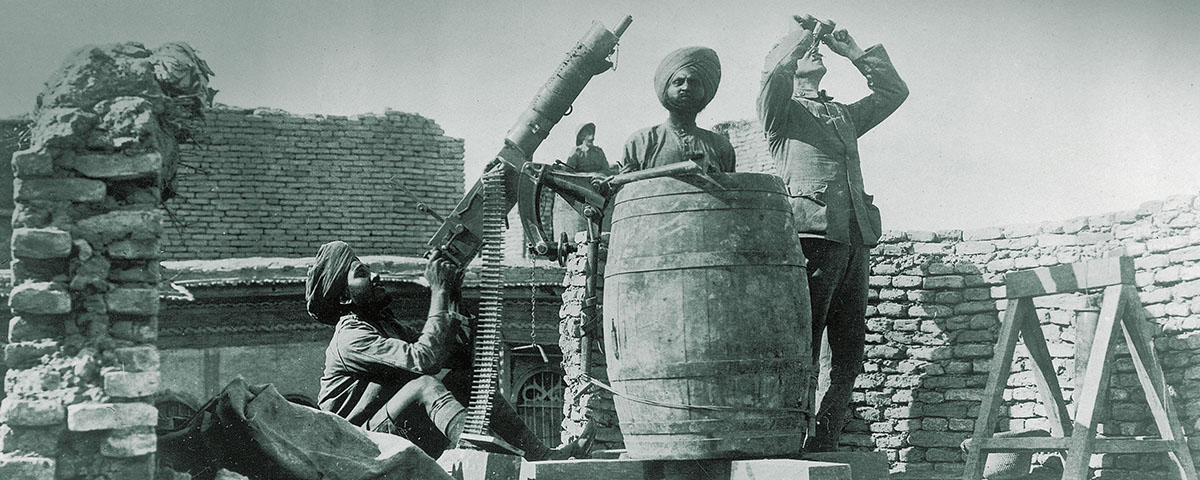In late April 1916 British Maj. Gen. Charles Townshend rode into captivity aboard an Ottoman boat up the Tigris River, while the 13,000 surviving men of his division undertook a brutal march, most later perishing in Turkish prison camps. The debacle followed what historian Jan Morris dubbed “the most abject capitulation in Britain’s military history”—the surrender of the 6th Division of the Indian army at Kut, Mesopotamia (present-day Iraq).
After declaring war on Turkey in November 1914, Britain landed a small force along the Tigris below Basra that was able to secure both the town and British-controlled oil facilities against disorganized, poorly led Turkish resistance. However, the British had sacrificed logistical support for speed, thus the garrison lacked an adequate supply and transportation infrastructure.
In April 1915 the British command, ignoring both the perilous logistical situation and growing Turkish strength, ordered Townshend’s 6th Division to continue toward Baghdad. Overcoming supply problems and illness among his Anglo-Indian troops, Townshend conducted a brilliant campaign against stubborn Turkish resistance to capture the village of Kut, north of Basra. Townshend was ordered that fall to advance 100 miles farther upriver and take Baghdad. He came close but was defeated by superior Turkish troops. Forced to withdraw, Townshend’s 16,000 weary troops fought a continuous rearguard action. On December 3 they stumbled back into Kut, where Townshend holed up and waited for relief. The village sat within an oxbow of the Tigris, proving both a strong defensive position and a dangerous cul-de-sac.
The pursuing Ottoman Sixth Army made three unsuccessful attacks against Kut before its commander elected to besiege the city with a minimal force and commit the bulk of his 30,000 troops to block British relief efforts. Townshend, hoping to spark urgency among relief forces, erroneously reported having only a 30-day food supply (he had about five times that amount). The false alarm prompted a series of disjointed relief attempts by undermanned and poorly supplied columns from Basra. Through early April 1916 the British launched more than six such expeditions, most of which ended in uncoordinated frontal attacks against prepared Turkish positions—with predictable results.
One night movement brought a British column within striking distance of a weak Turkish defensive position just 6 miles from Kut. But British commanders had been ordered to fire an artillery barrage before each assault. By the time the guns were brought up, the Turks had strengthened the position, and they easily defeated the subsequent British assault.
By late April the besieged force was out of food and options. Townshend surrendered his 13,000 men on the 29th. Overall casualty figures among the relief forces exceeded by double the number of men they had sought to rescue.
British forces, under new leadership and with proper equipment and support, eventually captured Baghdad. But the British army in Mesopotamia never recovered the resources, men and prestige it had lost at Kut. MH
Don’t rest on your laurels. Early tactical successes had emboldened the British, who advanced on Baghdad with insufficient forces.
Logistics count. The overextended British supply lines made assaulting Baghdad all but impossible.
Passivity is not a defense. Townshend’s decision to hunker down in Kut allowed the Turks to dictate the conduct of the campaign.
Maintain the initiative. The British squandered their last, best opportunity to relieve Kut through indecision and rigid adherence to a plan overcome by events.





